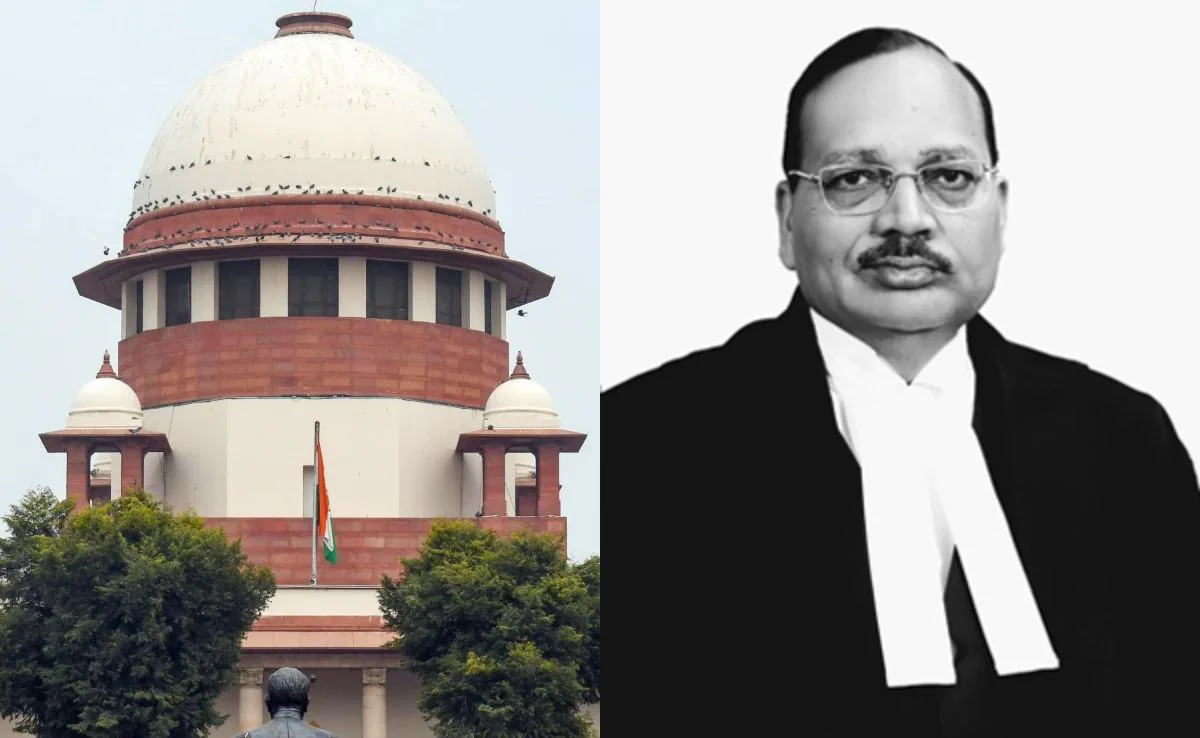
Supreme Court, in Judgment by Justice Surya Kant, Emphasizes Procedural Fairness in Industrial Land Allotment to KNMT
Introduction
An industrial land allotment that was made to the Kamla Nehru Memorial Trust (KNMT) by the Uttar Pradesh State Industrial Development Corporation (UPSIDC) was canceled by the Supreme Court of India in its judgment that was delivered on May 30, 2025.
The bench that comprised the Supreme Court of India consisted of Justice Surya Kant and Justice Nongmeikapam Kotiswar Singh.
Additionally, the judgment of the Court highlights the limited scope for judicial intervention when administrative authorities operate within their powers, as well as the significance of strictly adhering to contractual and statutory obligations in the distribution of public resources.
For any queries or to publish an article or post or advertisement on our platform, do call at +91 6377460764 or email us at contact@legalmaestros.com.
Facts of the Case
During the month of July in 2003, KNMT submitted an application to UPSIDC for a 125-acre block of land located in the Utelwa Industrial Area in Sultanpur and paid earnest money.
An allocation letter was provided by UPSIDC, which included the prerequisites for possession and the completion of lease-deeds, as well as a timetable for the payment of reservation money and interest-bearing installments of the provisional tariff.
However, KNMT was able to get extensions and finally paid the reservation amount along with interest, despite the fact that they missed the first reservation payment date. Subsequently, KNMT made a request for demarcation and ownership of the property, presenting allegations of encroachments; however, they failed to produce the necessary documentation for the leasing arrangement.
For any queries or to publish an article or post or advertisement on our platform, do call at +91 6377460764 or email us at contact@legalmaestros.com.
KNMT never paid the future installments, despite the fact that they were reminded many times. A series of notifications were provided by UPSIDC, and in January of 2007, the allocation was terminated in accordance with Clause 3.04(vii) of its Marketing Manual.
Initially, the Allahabad High Court reinstated the allocation subject to restrictions; however, UPSIDC was successful in confirming the cancellation when the KNMT filed a case against the cancellation. The subsequent petitions submitted by KNMT resulted in a lengthy legal battle that was brought before both the High Court and this Court.
For More Updates & Regular Notes Join Our Whats App Group (https://chat.whatsapp.com/DkucckgAEJbCtXwXr2yIt0) and Telegram Group ( https://t.me/legalmaestroeducators )
For any queries or to publish an article or post or advertisement on our platform, do call at +91 6377460764 or email us at contact@legalmaestros.com.
Contractual Framework and Statutory Provisions
An initial reservation payment that was equal to ten percent of the provisional premium was included in the allotment letter. Additionally, there were eight half-yearly instalments with fifteen percent interest, with a rebate available for timely payment.
Finally, there was an obligation to execute the lease deed and take possession of the property within the specified timeframes.
Clause 3.04, which mandates the issuance of three consecutive legal notices before cancellation, and Clause 2.15, which governs delivery of possession only after lease-deed registration, are important examples of the detailed procedures that were prescribed for dealing with defaults in the Uttar Pradesh State Industrial Development Corporation’s Manual for Marketing and Management of Industrial Areas.
For any queries or to publish an article or post or advertisement on our platform, do call at +91 6377460764 or email us at contact@legalmaestros.com.
Issues Before the Supreme Court
Whether UPSIDC had violated its contractual responsibilities by failing to give ownership and demarcate the property, so exonerating KNMT’s defaults, and whether the cancellation was procedurally faulty due to the absence of the required three legal notifications were the key issues that sought to be answered.
A wider range of public-trust requirements that control the distribution of industrial land were also taken into consideration by the Court.
Assessment of Alleged Frustration of Contract
According to KNMT’s argument, UPSIDC was unable to comply with the criteria for payment and documentation since it did not remove encroachments, demarcate the plot, and pass over control of properties.
For any queries or to publish an article or post or advertisement on our platform, do call at +91 6377460764 or email us at contact@legalmaestros.com.
Following an examination of the “as is where is” language in the allocation letter and the annexed site plan, the Supreme Court came to the conclusion that KNMT had accepted the demarcation that occurred on March 3, 2005 with the letter.
KNMT’s inability to submit documentation for the lease deed was the reason for the non-delivery of possession, according to the documentary evidence that was presented. UPSIDC was responsible for the purchase and removal of encumbrances.
A step that KNMT failed to take, as stipulated by Clause 2.15 of the Manual, was the requirement that possession could only come after lease-deed registration. KNMT’s persistent failure and delay in completing criteria impeded its own rights, according to the court’s conclusion, which was that UPSIDC did not violate the contract.
For any queries or to publish an article or post or advertisement on our platform, do call at +91 6377460764 or email us at contact@legalmaestros.com.
Validity of Cancellation under the Marketing Manual
Upon turning its attention to the matter of procedural compliance, the Court examined Clause 3.04 of the Manual, which stipulates that three legal notifications for default must be sent prior to cancellation.
KNMT acknowledged that the last notice that was sent on November 13, 2006, met the requirements to be considered a legitimate notice; nonetheless, they argued that UPSIDC had neglected to issue two notices that came before it. UPSIDC contended that its communications between December 2004 and December 2005 provided clear intimation of default, requests for payment, and repercussions for non-compliance.
These communications were not described as “legal notices,” but they did contain obvious intimation of default. Clarity of facts, reference to contractual violations, warning of imminent legal action, and language that is free of ambiguity were the important characteristics of a legal notice, and the Supreme Court determined that the previous correspondences satisfied these requirements before reaching its decision.
For any queries or to publish an article or post or advertisement on our platform, do call at +91 6377460764 or email us at contact@legalmaestros.com.
In order to fulfill the requirements of Clause 3.04(vii), UPSIDC had been successful in issuing three notifications that were legally binding. In light of the fact that KNMT had consciously chosen to pursue waivers rather than make payments, the cancelation decision was not only legally unchallengeable but also logically reasonable.
Concurrent Findings and Scope of Judicial Review
Earlier rulings issued by this Court and the High Court both documented that KNMT had failed to adhere to the payment schedules that were established. A breach of natural justice or a palpable perversity is required for interference with concurrent conclusions, according to the Supreme Court, which highlighted the concept of judicial restraint as outlined in Article 136.
After determining that none of these factors existed, the Supreme Court supported the judgment of the UPSIDC, reiterating that land-allocation authorities must be permitted to operate within the boundaries of their legislative and contractual power, contingent upon the implementation of fair processes.
For any queries or to publish an article or post or advertisement on our platform, do call at +91 6377460764 or email us at contact@legalmaestros.com.
Application of the Public Trust Doctrine
In addition to the debate that was taking on at the time, the Supreme Court used the Public Trust Doctrine to bring attention to the structural problems that are associated with the distribution of industrial land.
The Court decided that public resources, particularly huge tracts that are designated for industrial development, must be administered with openness, accountability, and in the community interest.
This was based on the fact that the idea was recognized in Indian jurisprudence under Article 21, which traced its roots back to Roman law. These standards were violated when KNMT was given the original allocation in a hurry, without any competitive bidding or serious examination.
For any queries or to publish an article or post or advertisement on our platform, do call at +91 6377460764 or email us at contact@legalmaestros.com.
When it comes to the distribution of public resources, the Court made the observation that it is necessary to exercise due care in the selection of beneficiaries, the evaluation of economic and environmental repercussions, and the procedures that ensure compliance with the aim.
In addition to putting the legal system under the weight of fifteen years of litigation, the failure to implement such protections also posed the possibility of misallocating valuable land that might have been used to promote employment and regional prosperity.
Directions for Future Allotments
The Court issued binding directives for transparent and non-discriminatory land-allotment procedures in order to avoid the recurrence of conflicts that are similar to those that have occurred in the past.
For any queries or to publish an article or post or advertisement on our platform, do call at +91 6377460764 or email us at contact@legalmaestros.com.
In order to enforce strict compliance with contractual conditions, include environmental and socio-economic concerns into allotment criteria, and implement a selection process that is either competitive or merit-based, state authorities are required to publish names of defaulters.
As a result of the verdict, any future allocation of the property in question to third parties was declared null and void, and any funds that had been received were instructed to be refunded. This statement serves to emphasize that cancellations made in accordance with due procedure do not compromise the public interest.
Conclusion
A detailed explanation of the priority of procedural fairness, contractual integrity, and public-trust obligations in the distribution of industrial property was presented by the Supreme Court in the case of Kamla Nehru Memorial Trust v. UPSIDC during the hearing.
For any queries or to publish an article or post or advertisement on our platform, do call at +91 6377460764 or email us at contact@legalmaestros.com.
The court held that chronic defaulters are not permitted to take advantage of procedural technicalities by carefully analyzing the allocation letter, the default mechanism in the Marketing Manual, and the behavior of KNMT.
It is imperative that administrative bodies develop rigorous and transparent allocation processes, and that courts recognize concurrent conclusions unless they are perverse. The ruling serves as a clarion cry for both of these things. The ruling, in the end, strikes a compromise between the protection of individual allottee rights and the more general requirement of prudently managing public resources.




![Research Assistantship @ Sahibnoor Singh Sindhu, [Remote; Stipend of Rs. 7.5k; Dec 2025 & Jan 2026]: Apply by Nov 14, 2025!](https://legalmaestros.com/wp-content/uploads/2025/11/Gemini_Generated_Image_s0k4u6s0k4u6s0k4-768x707.png)
![Karanjawala & Co Hiring Freshers for Legal Counsel [Immediate Joining; Full Time Position in Delhi]: Apply Now!](https://legalmaestros.com/wp-content/uploads/2025/11/Gemini_Generated_Image_52f8mg52f8mg52f8-768x711.png)
![Part-Time Legal Associate / Legal Intern @ Juris at Work [Remote]: Apply Now!](https://legalmaestros.com/wp-content/uploads/2025/11/ChatGPT-Image-Nov-12-2025-08_08_41-PM-768x768.png)
![JOB POST: Legal Content Manager at Lawctopus [3-7 Years PQE; Salary Upto Rs. 70k; Remote]: Rolling Applications!](https://legalmaestros.com/wp-content/uploads/2025/11/ChatGPT-Image-Nov-12-2025-08_01_56-PM-768x768.png)